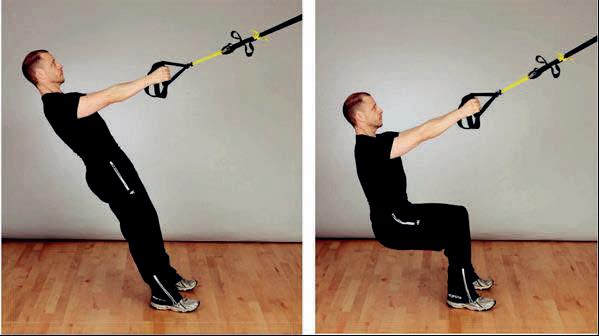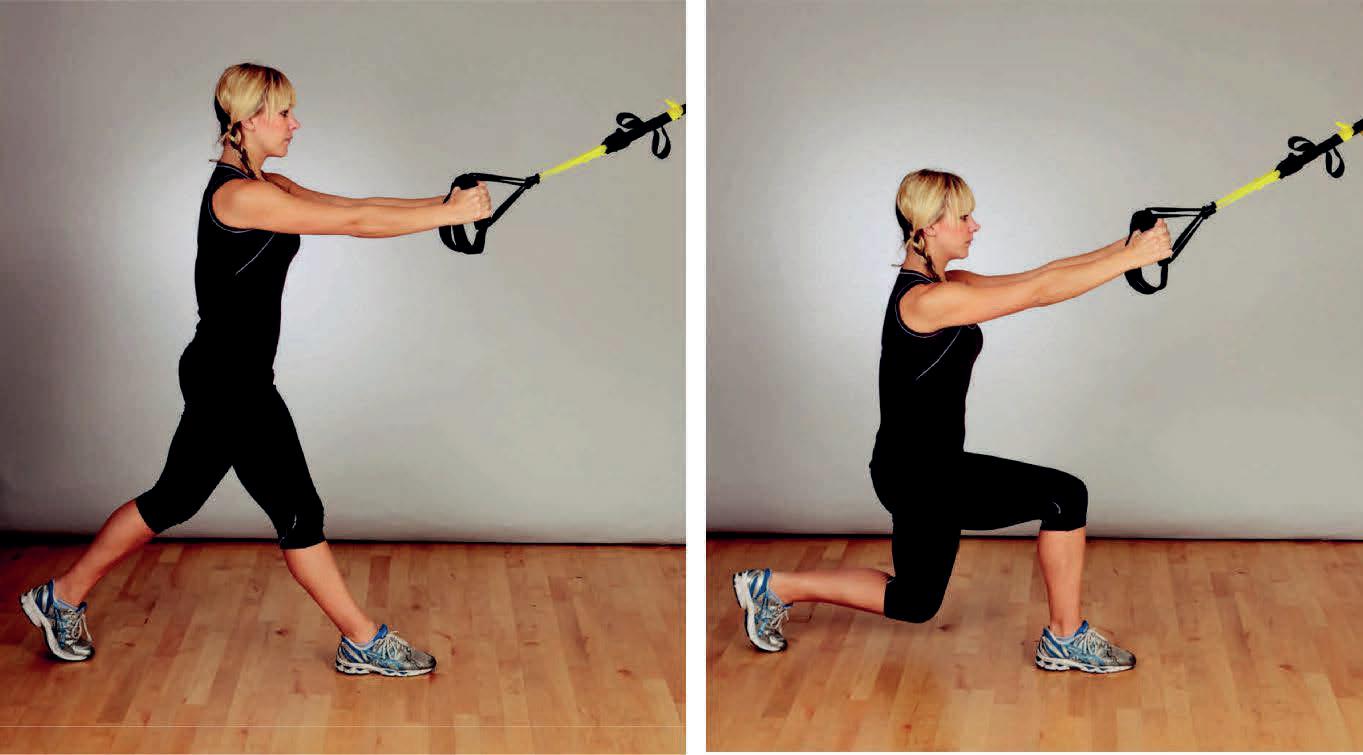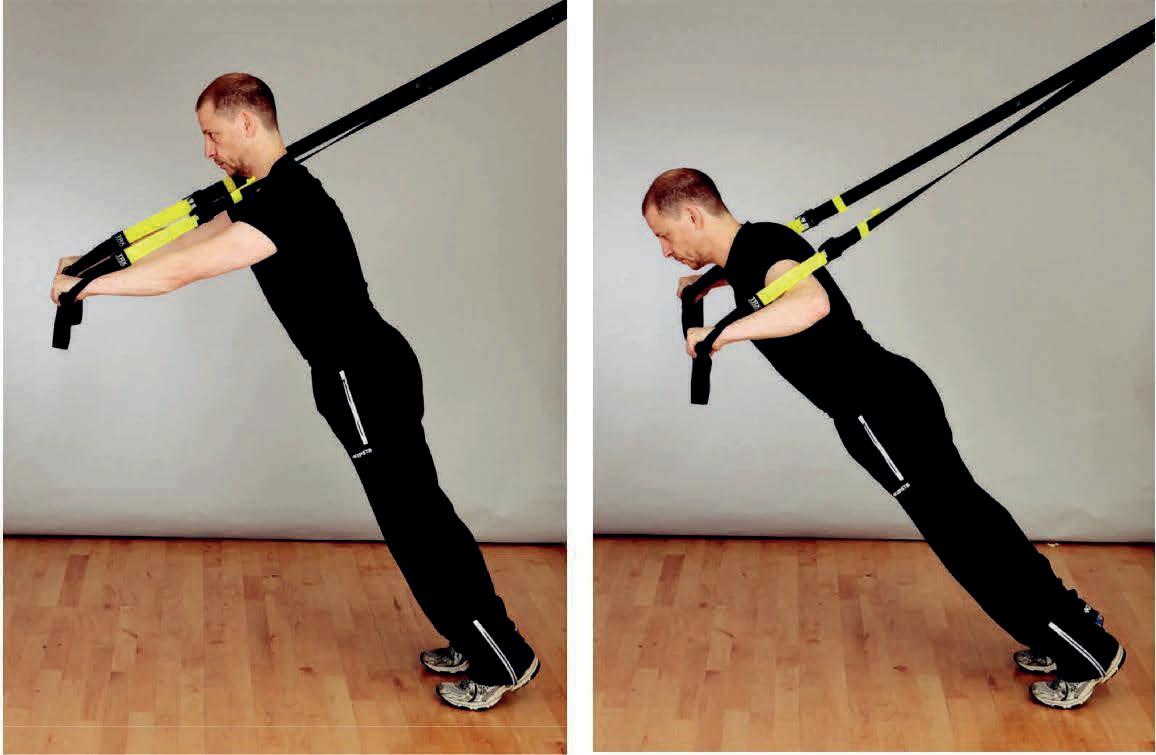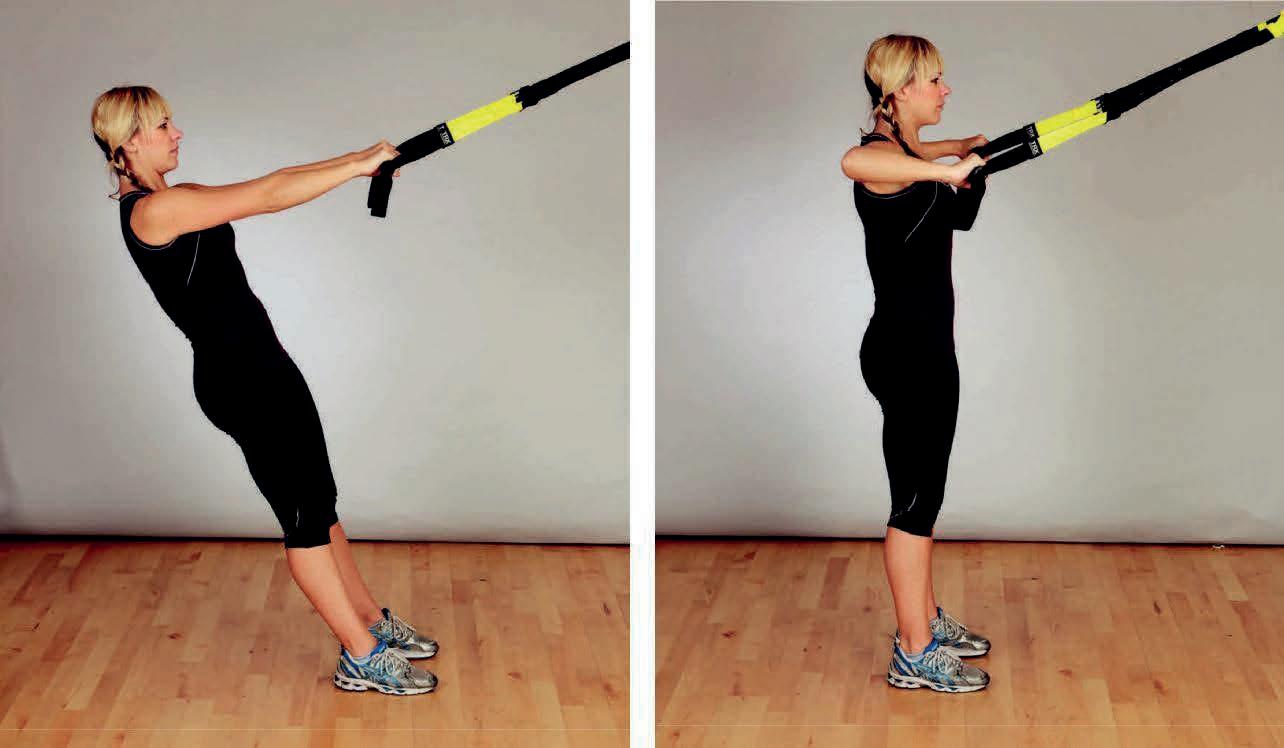
8 minute read
Hand support for upper body
from Suspension Fitness
by YMCA Awards
Evaluation
An important element of being a fitness professional is having the ability to evaluate the delivery and content of a session. Clients and other instructors can all give feedback relating to teaching skills and the general flow of sessions/exercises. In order to keep developing, it is important that the trainer spends time reflecting on how the session went and consider what changes are required for the future. For the client, it is of fundamental importance that trainers review content in order to establish the best way to achieve the client’s wants and needs.
Key points
The key points for this section are: all sections of the session must be taught safely and effectively demonstrations of technique should be clear and show correct alignment appropriate advice relating to resistance and skill level must be given to the participants effective observation of the participant should be demonstrated throughout relevant teaching points and praise of correct technique should be delivered and reinforced throughout.
Suspension Fitness | Manual | Version0821 © YMCAfit 2021 Page | 19
The exercises
The suspension fitness instructor needs to be able to perform and more importantly teach a variety of exercises. In this section we explore how to teach a varied selection of exercises.
Objectives
By the end of the section you should be able to: perform a variety of suspension fitness exercises with correct alignment and technique deliver the relevant teaching points for a variety of suspension fitness exercises offer appropriate alternatives /variations for different exercises identify specific regions or connected regions of the body targeted by specific exercises consider the appropriate set up position for suspension fitness equipment relevant to the exercise performed consider the planes of motion when selecting exercises.
Muscles or movements – let’s make this easy!
In reality, we can’t really isolate just one muscle. We can place focus on a certain region, aiming to increase work on a certain muscle but synergists will always be involved to some extent. Muscle synergy makes it quite complicated to identify which muscles are actually doing what roles, especially when we start to consider whole body integration exercises. To allow instructors to identify which specific regions of the body are being targeted in an integrated manner, we can use the following guidelines.
Introduction to chains
Let’s think about the body as a connection of regions that make up ‘chains’
Extensor chain
These muscles, usually on the rear of the body, have an extension role in addition to preventing or decelerating flexion. The erector spinae, the glutes, the hamstrings and muscles on the rear of the lower leg are combined in this chain. The quadriceps, on the anterior of the body, will extend the knee. Sagittal plane exercises will employ this chain.
Suspension Fitness | Manual | Version0821 © YMCAfit 2021 Page | 20
Rotation spiral
Muscles with a diagonal pull to gravity allow us to produce rotation, in addition to preventing or decelerating it. Examples are serratus anterior, the obliques, the medial and lateral rotators of the hip and the muscles controlling the orientation of the foot. Any exercise with a ‘transverse’ plane challenge will employ this line of muscles.
Lateral chain
Muscles with a line of pull down the side of the body allow us to produce side-bending, in addition to preventing or decelerating it. They include the latissimus dorsi, the obliques, quadratus lumborum, the hip abductors and adductors and the muscles controlling the arches of the foot. Frontal plane exercises will employ this chain.
Flexor chain
The anterior of the body is layered with muscles responsible for flexion, in addition to preventing or decelerating extension. They include the rectus abdominus, the hip flexors, and the dorsi-flexors of the ankle. Sagittal plane exercises will also employ this chain.
Of course, specific muscles of the limbs and trunk can be targeted as desired alongside these connected regions. The quadriceps will still extend the knee, a biceps curl will still require resisted concentric elbow flexion, but now it can be combined with a ‘system’ of other muscles connecting the arm to the floor.
Other factors to consider
The 3d element
Suspension fitness will allow instructors to challenge all three planes simultaneously. Any one plane can be biased more than another, depending on the goals of the client.
Co-contraction
Once the intensity of an activity goes above a certain point we cannot help but to co-contract muscles. This means synergists become increasingly involved, but it also means agonists and antagonists will begin to contract together. The relevance to the exercises presented in this manual is that although emphasis is placed on particular chains due to body position in relation in gravity, the muscles of the core will generally be working strongly whatever. This control of the mid-section will come from the front, back and sides of the body in varying degrees.
The exercises included in this text are not exhaustive in terms of the options offered by this training approach. Understanding the principles of the exercise and the methods of progressing or modifying them will allow for an unlimited number of exercises to be developed. The most important aspect is displaying the ability to meet the client’s wants and needs safely, in a way that works for them.
Suspension Fitness | Manual | Version0821 © YMCAfit 2021 Page | 21
A guide to the exercises (NASC)
N - Name – name of the exercise for this text
A - Area – upper body, lower body or ‘core’ focus (designated by where most individuals would feel the overload most and which muscles may be targeted more specifically)
S - Set up of equipment – e.g. long, mid-long, mid-short, short, or knee (the exact setting will somewhat depend on the environment (high/low ceiling) and so will need to be adapted as such)
C - Chain or chains primarily challenged.
Remember – tension must be maintained in the suspension cords in all exercises throughout
Hand support for lower body
N - Name - Hand support squat A - Area – lower body (quadriceps, gluteus maximus, hamstrings, and gastrocnemius)
S - Set up of equipment – mid-long
C – Chain – extensor chain
Teaching points
keep weight through the three points of support of the foot in a slightly wider than hip width stance knee and second toe alignment is maintained throughout bend at knees, hips and ankles to achieve desired depth before returning to start position.
Suspension Fitness | Manual | Version0821 © YMCAfit 2021 Page | 22
N - Name - Hand support lunge A - Area – lower body (quadriceps, gluteus maximus, hamstrings, hip abductors and gastrocnemius)
S - Set up of equipment – mid-long
C – Chain – extensor chain
Teaching points
hips face anchor, body aligned above in the client’s neutral spine – maintain throughout the exercise maintain the weight through the three points of support of the front foot and the forefoot of the rear leg bend at knees, hips and ankles to form a right angle with both front and rear leg ensure rear foot does not roll to place excessive weight though the big toe return to start position so that front leg becomes straight.

Suspension Fitness | Manual | Version0821 © YMCAfit 2021 Page | 23
Hand support for upper body
N - Name - Hand support chest press A - Area – upper body (pecs, triceps, deltoids)
S - Set up of equipment – mid-long
C – Chain – flexor chain
Teaching points
stand facing away from the anchor start with the feet slightly wider than hip width apart with a firm grip of the hand supports and knuckles and wrists aligned, elbows are bent at around shoulder height in a chest press position extend through arms at elbow and shoulders and then return under control to start position the only movement occurring should be from the elbows and shoulders pushing exercises will especially challenge shoulder blade control and these should remain flat against the ribcage throughout the exercise.
Variation 1: Flyes
start in the wide position so that the arms and trunk form a cross shape maintain slight bend in the elbows throughout the exercise, keep the wrists strong and aligned in a neutral position draw the still straight arms across the body in a flye action the only movement should be at the shoulder joint.
Variation 2: Off-set stance
adjust feet so that although still wider apart one foot is forwards of another clients often find this allows for a more stable base.

Suspension Fitness | Manual | Version0821 © YMCAfit 2021 Page | 24
N - Name - Hand support row A - Area – upper body (posterior deltoid, latissimus dorsi, biceps, rhomboids/trapezius at shoulder girdle)
S - Set up of equipment – mid-short
C – Chain – extensor chain
Teaching points
stand facing the anchor with the desired amount of lean from the feet up through the trunk hold onto the suspension equipment with an overhand grip knuckles and wrists are aligned in a firm neutral position bend at the elbows as the body is pulled forwards to return to a more vertical position keeping the elbows high and wide at shoulder level throughout slowly return to the start position alignment is maintained from the foot to head, ensuring that only the arms and shoulder produce the movement.

Suspension Fitness | Manual | Version0821 © YMCAfit 2021 Page | 25









